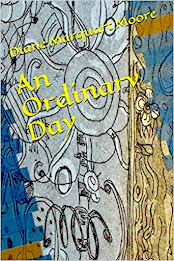 During my stay in Sewanee, Tennessee this year, I’ve noticed a lot of signage indicating places that lead to the Cherokee Trail of Tears. Yesterday, I read in The Sewanee Mountain Messenger, Sewanee’s newspaper of note, that the TN Chapter, Trail of Tears Association and Franklin County Historical Society is sponsoring their first annual Trail of Tears walk. On October 27, the organizations will commemorate the 180th anniversary of the Bell Trail of Tears Detachment’s passage through Franklin County in 1838. Folks who’re interested in this walk will follow a 0.8 mile path on foot or horseback from the Old Cowan City Park, the original route that the detachment took, to the courthouse square in Winchester, TN.
During my stay in Sewanee, Tennessee this year, I’ve noticed a lot of signage indicating places that lead to the Cherokee Trail of Tears. Yesterday, I read in The Sewanee Mountain Messenger, Sewanee’s newspaper of note, that the TN Chapter, Trail of Tears Association and Franklin County Historical Society is sponsoring their first annual Trail of Tears walk. On October 27, the organizations will commemorate the 180th anniversary of the Bell Trail of Tears Detachment’s passage through Franklin County in 1838. Folks who’re interested in this walk will follow a 0.8 mile path on foot or horseback from the Old Cowan City Park, the original route that the detachment took, to the courthouse square in Winchester, TN.
During the 18th century, the Cherokee roamed the southern Appalachians for many years—Georgia, North Carolina, Tennessee, upper South Carolina and parts of Alabama, Virginia, Kentucky, and West Virginia. However, during the early 19th century, the federal government began to search for land in the southeastern U.S. that they deemed suitable for expansion and made plans to remove the Cherokee and other so-called “civilized tribes.” The Cherokees opposed this move, and 16,000 tribal members sent a signed petition to Washington, D.C. objecting to the proposed upheaval. The famous poet, Ralph Waldo Emerson, wrote a personal letter to President Martin Van Buren objecting to the plan, and Davy Crockett of Tennessee fame also voted against the removal plan.
According to Barbara Duncan, author of Living Stories of the Cherokee, the Cherokee nation had a population of 20,000 men, women, and children, boasted of a constitutional government, had its own language, and published a bilingual newspaper, the Cherokee Phoenix. Many members of the tribe were Christians, industrious farmers and plantation owners. No matter, the Cherokee were rounded up at gunpoint, put in stockades for months, and then began a march to Oklahoma on the Trail of Tears. Casualties reached as high as 8,000-10,000, and at least 4,000 Cherokee died on the trail. This tragedy has been documented in the outdoor drama, Unto These Hills, staged in Cherokee, North Carolina.
On a visit to Sylva, North Carolina, I discovered the aforementioned book, Living Stories of the Cherokee, which contains stories about “The Little People” of the Cherokee nation. I blogged about these tribal members called the Nunnehis whom the Cherokee refer to as “immortals.” According to one of the stories, they’re about two feet high, sometimes smaller, and are mischief making spirits, as well as protectors. Author Duncan includes a story that could spook readers: “As you’re out in the woods/you might hear something,/you might hear some music,/you might hear someone talking, and it’s the Nunnehi,/ and they’re reminding us/that they’re always with us…”
Storytelling is a strong part of the Cherokee culture, and thrives in western North Carolina; it survives in the free verse featured in Duncan’s Living Stories of the Cherokee, which makes the art attractive to me. The eastern band of Cherokee also keep their legends and myths alive by telling them in public schools and churches, at regional festivals like Mountain Heritage Day at Western Carolina University in Cullowhee, North Carolina, and at powwows throughout the region. I enjoyed the story told by the author of Living Stories who says that the legends are often full of puns and carry a moral. “For example, if a child starts bragging, at some time, either then or maybe later that day, the story about the possum losing his tail will come up,” Duncan writes —sorta’ like Pinocchio and his nose growing longer each time he lies. I wonder if the Winchester trail walkers/riders will hear a few stories or encounter any Little People along the way on October 27.
Author Barbara Duncan won the 1998 Thomas Wolfe Literary Award, Western North Carolina Historical Association. She is Education Director of the Museum of the Cherokee Indian in Cherokee, North Carolina.
Cover illustration "He Tells the Creation of Our World" by Paula Maney Nelson (Eastern Band of Cherokee Indians) from cover of Living Stories of the Cherokee and photographed by Barbara Duncan.













No comments:
Post a Comment